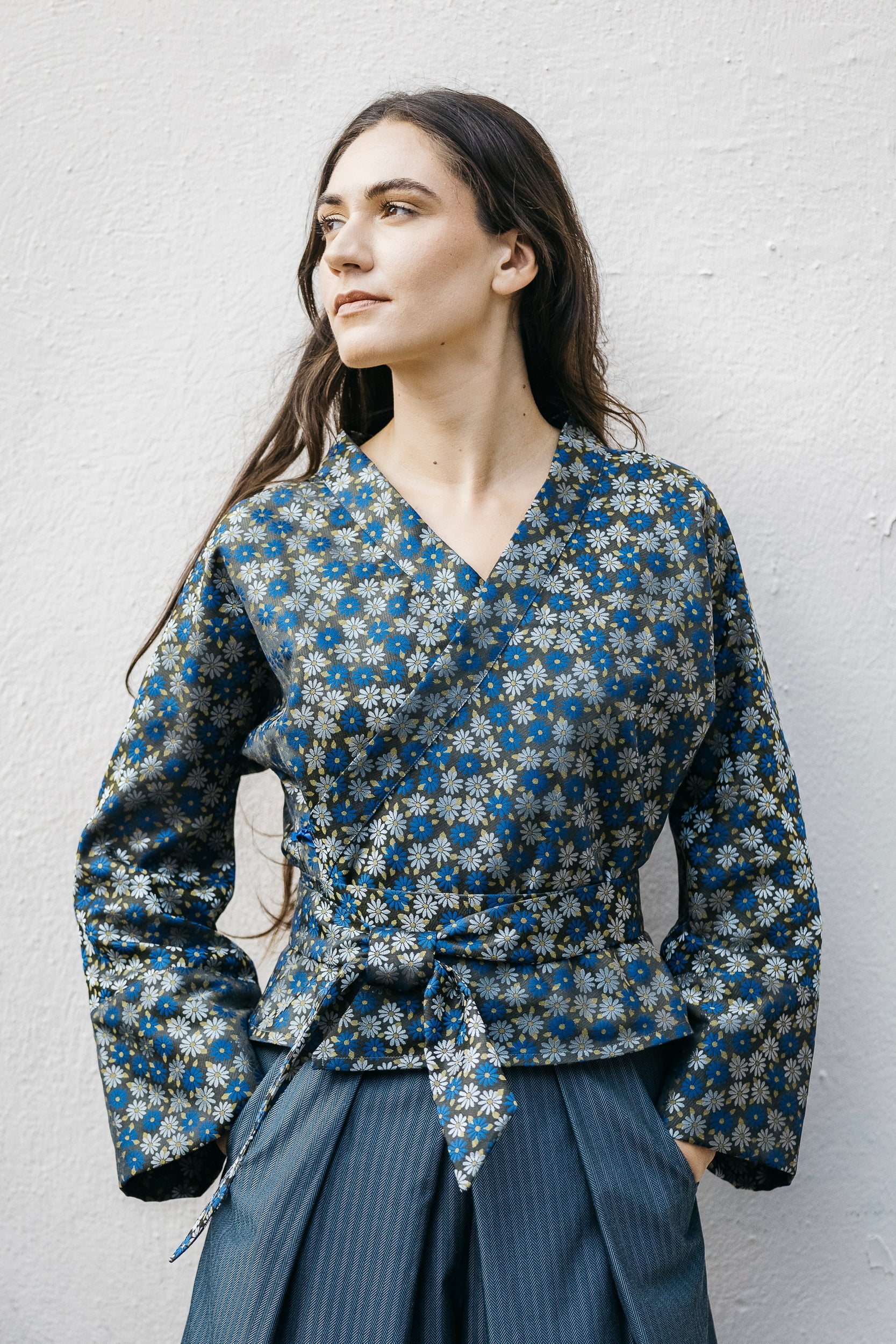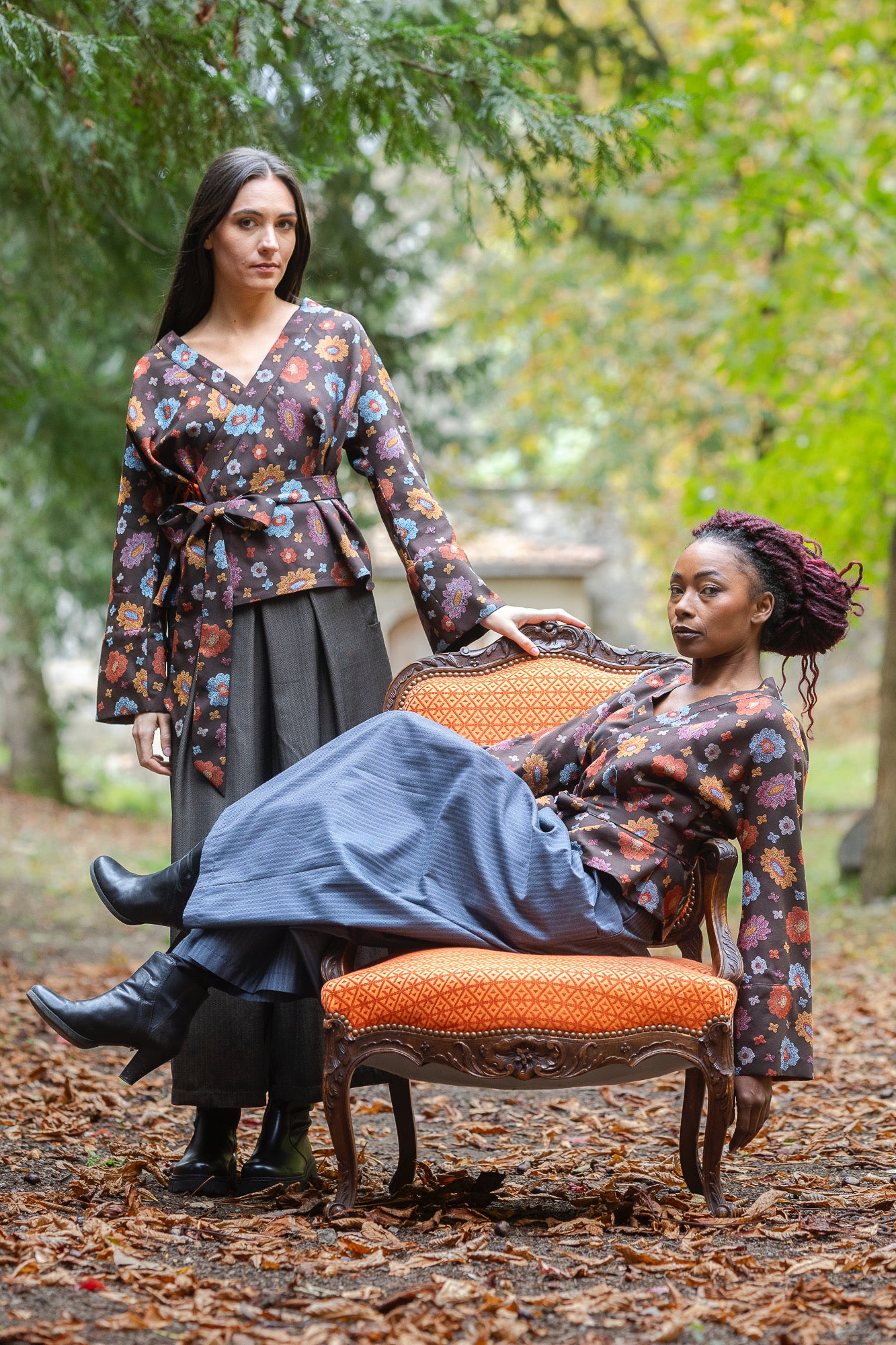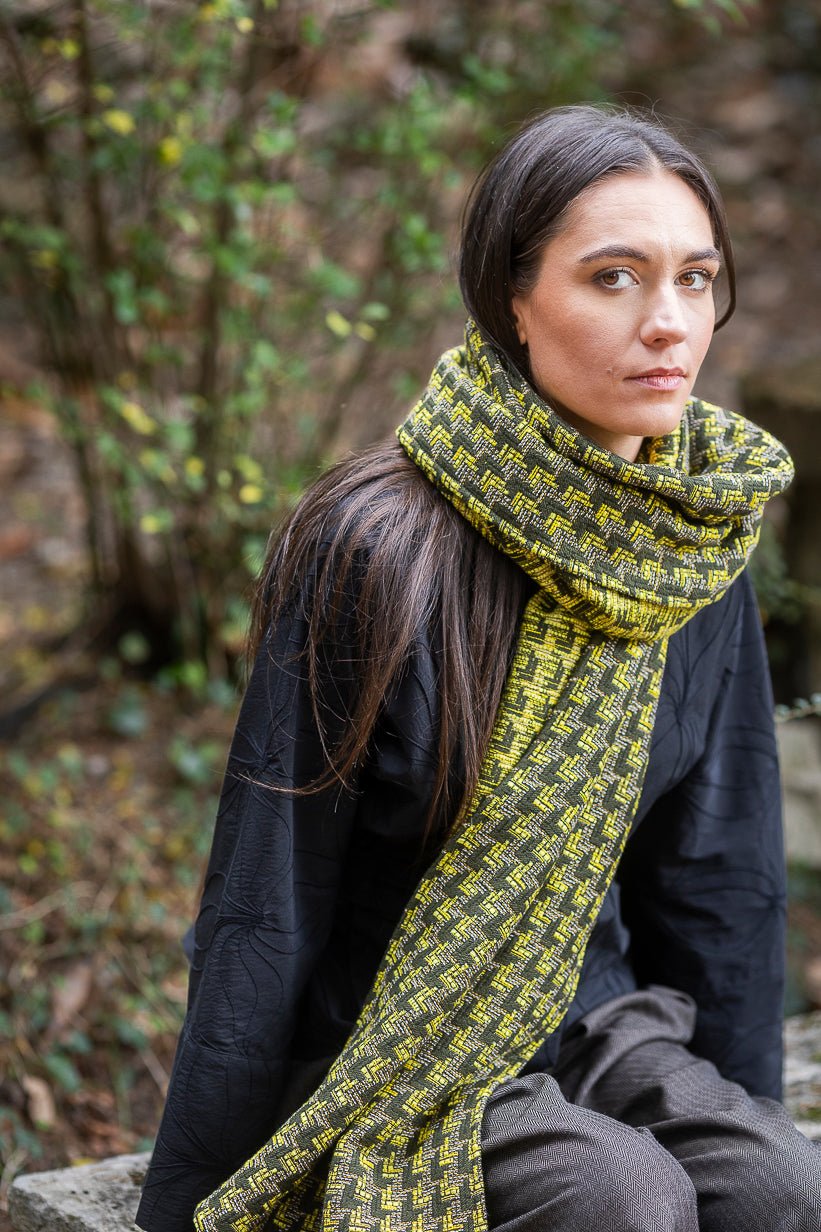KIMONO (from kiru and mono) literally means: “Something you carry on yourself”.
The kimono is a multifaceted garment that carries centuries of history in its fabric. Although old and associated with Japan, it remains a timeless worldwide. The Japanese kimono has been able to find a place in fashion since the Edo period (1600-1868).
Initially, the kimono derived from a Chinese garment, but was poorly adapted to the Japanese climate. The Japanese then made it their own: they geometricize it completely, it is worn in a fairly restrictive way, the collar is placed slightly back, thus allowing women's necks to be freed. It is also important to note that the Japanese kimono is both a male and female garment. No matter who wears it, the Japanese kimono suits everyone! If the traditional Japanese kimono is worn by both sexes, only the uses, ornaments, colors and accessories allow them to be differentiated .
The kimono fashion was exported late. It really arrived in Europe in the second half of the 19th century,beginning of the Meiji era (1868-1912) in Japan. Thus, in universal exhibitions organized in Europe, we see this exotic garment arriving. It surprises with its very rigorous, geometric T-shaped shape. It is made with strips of fabric of 13 to 15 meters, of the same width (35 cm), folded, but never cut. What is interesting about the Japanese kimono is that it offers a large surface area for ornament and decor, both complex and coherent. It is a garment carrying visual force and meaning, in particular thanks to sumptuous evocative patterns.
Also, the importance of its sleeves gives it a majestic look and allows to theatricalize the gestures of women. This last element impressed and would attract the attention of Western designers much later.
According to tradition, its port is very codified. Depending on the color, the pattern, the crossover, the sleeve length, it provides information very precisely on the social status, marital status, age, a characteristic event of the person who wears it. Traditionally, it is made with silk, cotton, linen textiles, plain or resist dyed (SHIBORI technique ) and is very often embroidered.
Thus, young single women wear the FURISODEentirely covered with patterns, with very long, floating sleeves (HITOE) that can reach up to 1 meter.
In contrast, the TOMESODE, with shorter sleeves (KOSODE) is worn by married women. The patterns start below the waist and sometimes continue on the shoulders and sleeves (HUMONGI).
The SHIROMUKU, or UCHIKAKE when the sleeves are long, is the wedding kimono white in color, with colorful patterns.
The kimono began to be relegated to the exceptional wardrobe after the Second World War, with Japanese women adopting a more Western mode of clothing for their daily lives, adapted to contemporary life. However, for important and festive events in their lives, they put their kimonos back on.
Wearing a kimono, to keep it in place, requires a large belt called an OBI closed by a masterful knot located in the back. The way it is tied expresses social class, marital status, etc. The OBI, quite rigid, serves as a sort of corset on the outfit. It can be very wide, up to 33 cm, and very long, up to 4.5 m.
Japanese and Western designers have shown all the modernity of the kimono. The purity of the cut means that it can be adapted to much more “sporty” clothing, thus giving a second life to the kimono. The kimono has also become much shorter (HAORI - short jacket). In Japan, some men wear the kimono jacket in a relaxed atmosphere. Also in the West, many men and women use the cotton or linen YUKATA kimono as innerwear because it is extremely comfortable to wear.
If in Japan, the kimono is a common garment (and originally, a very popular garment), in the West, it has been made into an object of luxury and prestige that the biggest fashion houses have appropriated.







